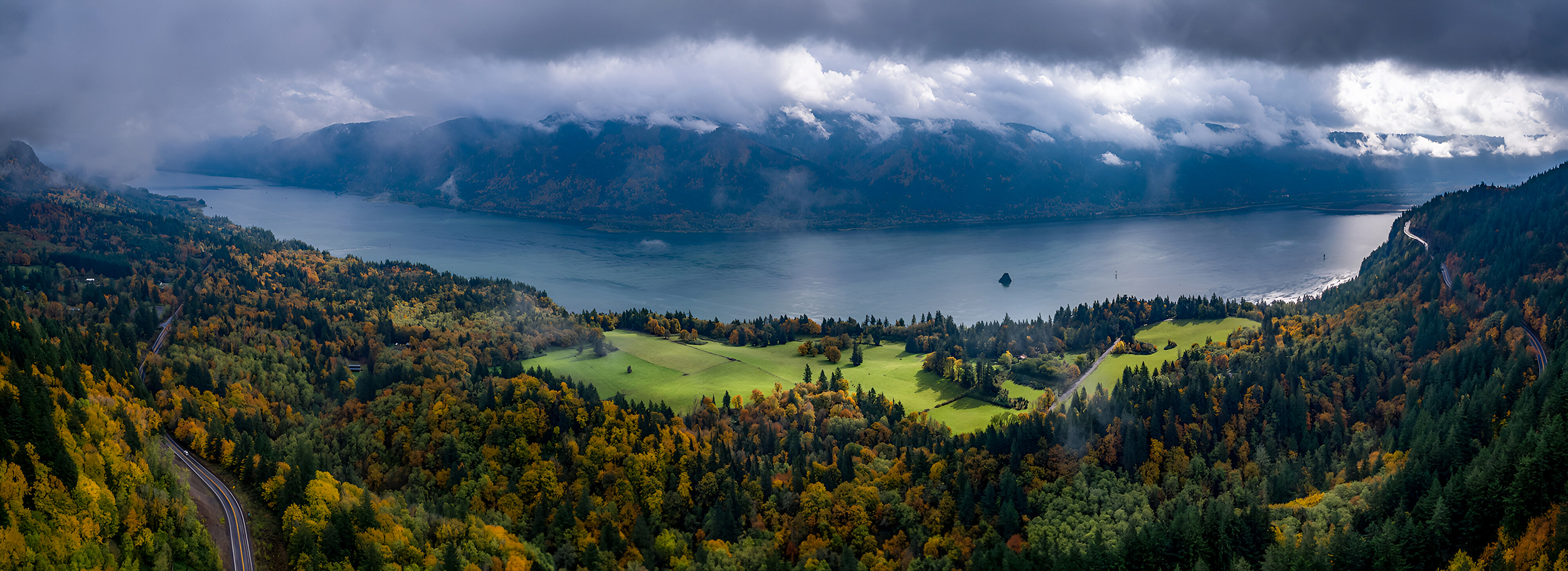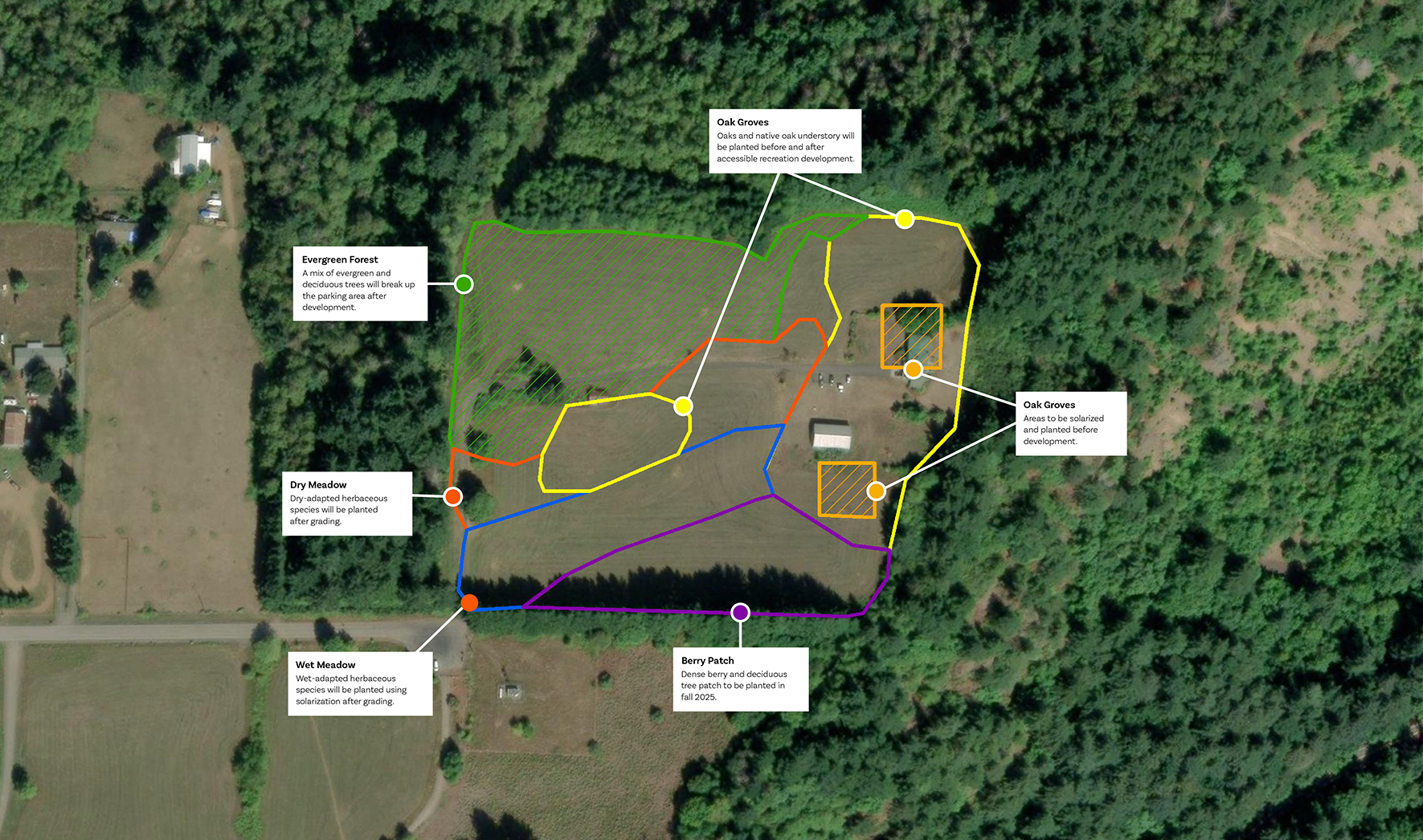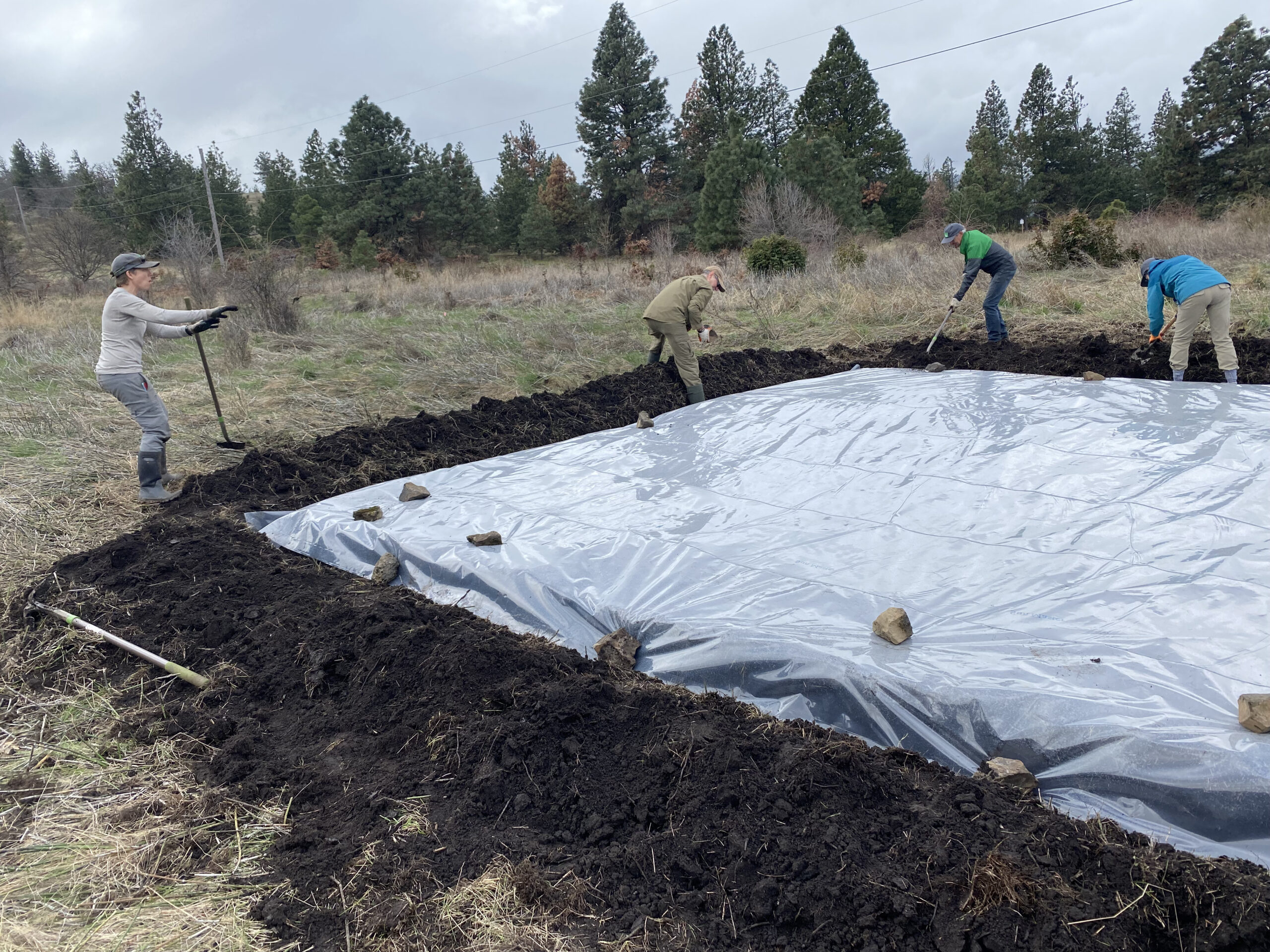
In 2020, Friends acquired two spectacular properties at Cape Horn and Catherine Creek. Each holds extraordinary opportunities for habitat restoration and accessible recreation. Donations to Share the Wonder will set the stage for natural recovery of these lands and make them more resilient in the face of climate change.
Throughout this article, you’ll encounter the term “climate resilience.” What does it mean? Watch a short explainer video here.
by Stewardship Manager Sara Woods and Preserves Manager Frances Fischer
Since Friends’ Land Trust was founded, we have prioritized purchasing land for ecological resources and, on a handful of occasions, to build recreational hiking trails. Our stewardship goals for these projects have typically been to improve an already natural landscape. Share the Wonder will fund a brand-new horizon for Friends: restoring and developing degraded lands to boost climate resilience and complement existing public recreation sites.
In recent years, Friends has acquired two preserves adjacent to popular U.S. Forest Service-owned Gorge trails at Cape Horn and Catherine Creek. Both properties came with multiple buildings and highly degraded areas, including a hayfield at Cape Horn and an old horse corral and abandoned quarry at Catherine Creek. Friends members like you have learned a lot about the planned development of accessible recreation opportunities at these sites, but this article will focus more on the ecological restoration plans for Cape Horn and Catherine Creek. Not only will there be beautiful, accessible facilities at both of these preserves, but there will be oak groves and meadows and restored habitat for wildlife.
Over the last few years, our stewardship staff has worked to prepare Cape Horn and Catherine Creek for restoration. Our goal for stewardship at these sites is to improve habitat by increasing biodiversity and restoring ecosystem functions that build climate resilience by controlling invasive weed infestations and removing human-made materials (fences and buildings) on site so that native species can be reintroduced. Given the high level of invasive weeds and buildings at both sites, this strategy was more daunting than at other properties our land trust has acquired over the years. First, we needed to stabilize the sites to prepare them for large-scale stewardship. We gathered information through conducting botanical, wildlife, and cultural surveys. Then we started the great removal. For Cape Horn, that meant removing a quarter mile of fence, infestations of Himalayan blackberry, and large overgrown ornamental plants. For Catherine Creek, that meant removing horse barns, pole barns, garages, telephone poles, and a home-spun plumbing system (whew)!
This year, thanks to generous contributions to Share the Wonder, the stewardship team will continue these projects by removing more buildings, preparing sections of Cape Horn’s hayfield for planting, and implementing forest management practices. Houses and outbuildings are scheduled to be deconstructed at both sites while repurposing and recycling as much of the unwanted material as possible. This work is very labor intensive and costly—even more so than a typical demolition since more time and effort is required to salvage materials.
Although we still have more to remove, we are all feeling ready to add to these places and create something new! Much of the restoration work in 2024 will focus on Cape Horn. The preserve’s 12-acre hayfield is our first target. Part of the area will be developed as an accessible recreation site, and the rest will be restored to a mixture of evergreen forest, native meadows, and most prominently, climate-resilient oak groves. Oregon white oaks were once abundant in the Western Gorge, but many of these slow-growing, drought-tolerant trees were logged from the landscape around 100 years ago. Introducing more oaks to Cape Horn will increase native biodiversity and climate resilience. And we’re not alone. The U.S. Forest Service, the Washington Department of Natural Resources, and others are also part of this multi-agency effort to boost the oak population in the area.

This spring, in collaboration with a forester, we’ll begin strategically cutting some Douglas firs to open the canopy and reduce competition among the remaining trees, allowing them to grow in a natural pattern. A handful of trees will become “snags,” the term for a standing dead tree that allows animals like birds, squirrels, and more to use the tree as both a food source (through insects that live in the dead wood) and a habitat (through cavity nests). This project will create a healthier, more biodiverse forest well on its way to old-growth status.
Much of the Cape Horn Preserve that is now hayfield will become open oak groves and native meadows, but some areas will be converted into more densely growing forest similar to the species already present along the Cape Horn Trail. In one section of the hayfield, we are starting what we are calling the “berry patch.” Once the invasive weeds in this acre-sized area are controlled, we’ll plant deciduous trees and shrubs like maples, dogwoods, alders, and cherry species along with a variety of native berries. We are hoping to create a jungle feel for visitors on this section of accessible trail with towering and creeping native berries including elderberry, blackcap raspberry, salmonberry, and thimbleberry.
Finally, we are beginning to plan oak groves. Oaks are slow growers, which is not particularly convenient when you hope to create a park with a little shade out of a hayfield. We plan to get as many oaks planted as soon as possible before construction begins to get a head start. We began this project in fall 2023 when we collected acorns from Cape Horn and other areas of the Gorge and planted them in small pots. These acorns will be tended to for a few years before we transfer them to their new home in our oak groves.
We are preparing our flagship oak grove locations this spring by installing solarization patches that control invasive weeds by exhausting the seed bed in the top layer of soil, a strategy that we have been testing at our Mosier Plateau property. This is done in spring by tilling the area, wetting the surface, and covering the area with a large sheet of plastic. This approach creates a greenhouse effect that is conducive to seed germination (warm and damp) but not plant growth (very hot). Under the plastic, seeds sprout and the weed seedlings begin to have some initial growth. But soon, the summer heat makes the temperatures unbearable for the young plants and they wither away.

This happens over and over until most of the seeds are exhausted. We will leave the plastic in place for a year or two, then in the fall, remove it and plant our oak seedlings along with their shorter herbaceous plant buddies. In the meantime, we need to protect the thin plastic and our little plant seedlings from our wildlife friends like deer and elk, so if you visit Cape Horn this summer, you will see some tall fencing surrounding our solarization plots.
As you can see, we have our work cut out for us at Cape Horn and Catherine Creek. But with your generous support through Share the Wonder, we’re ready to tackle these critical projects to turn both sites into climate-resilient havens for both native wildlife and people. We’re so excited for what’s to come, and we’re glad you’re here with us.
To reach our $6.6 million goal for Share the Wonder, we’ll need the support of the entire Friends community. Our success requires action from each of us. By sharing the wonder with a gift today, you can help Friends make an even bigger impact on the lands, wildlife, plants, and communities of the Gorge.